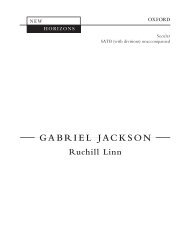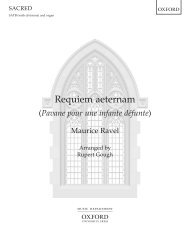New Oxford Organ Method
A single piece of repertoire is the primary focus for each chapter, with preparatory exercises providing the necessary technical work building towards the piece. Each lesson covers four main topics, which are systematically developed: practice methods, registration, fingering and pedalling, and historically-informed interpretation. The method is for keyboard players of any age who are establishing first steps at the organ with or without a teacher. It will also serve more experienced organists who want to improve their technique.
A single piece of repertoire is the primary focus for each chapter, with preparatory exercises providing the necessary technical work building towards the piece. Each lesson covers four main topics, which are systematically developed: practice methods, registration, fingering and pedalling, and historically-informed interpretation. The method is for keyboard players of any age who are establishing first steps at the organ with or without a teacher. It will also serve more experienced organists who want to improve their technique.
- No tags were found...
Create successful ePaper yourself
Turn your PDF publications into a flip-book with our unique Google optimized e-Paper software.
Chapter 3<br />
25<br />
Playing with the toe<br />
The ideal point for playing pedal notes is the inside tip of your shoe, alongside your big toe. We refer to this<br />
inside tip as ‘the toe’. Tilt your foot so that the toe is ready to play a pedal. Pretend that you have painted a<br />
coloured dot on that part of your shoe, and always play on this imagined dot. Join your knees, as this tilts<br />
each foot onto the imagined coloured dot.<br />
Follow the next stages slowly. They lay essential foundations for your pedal technique that will equip your<br />
feet to play as musically and with as much agility as your fingers.<br />
Place your hands on the key cheeks, which are the sides of the lowest manual. Check that your back is<br />
straight, your neck relaxed, and your shoulders dropped.<br />
for online perusal only<br />
• Silently rest the inside edge of your left shoe on the A you have just found.<br />
• Leave your heel on the note and angle the tip of your shoe upwards above the note.<br />
• Relax your calf muscle, so that your toe falls and causes the note to sound. Sustain this note.<br />
• Check that your heel remains lightly on the surface of the note as the toe plays.<br />
• To release the note, gradually allow the spring in the pedal key to return your shoe to the surface.<br />
The note stops; meanwhile your shoe still rests on the surface of the key.<br />
• Repeat. You should feel as though your ankle controls a tapping action.<br />
• Repeat all the steps above with your right foot on its note, E.<br />
continued...


















